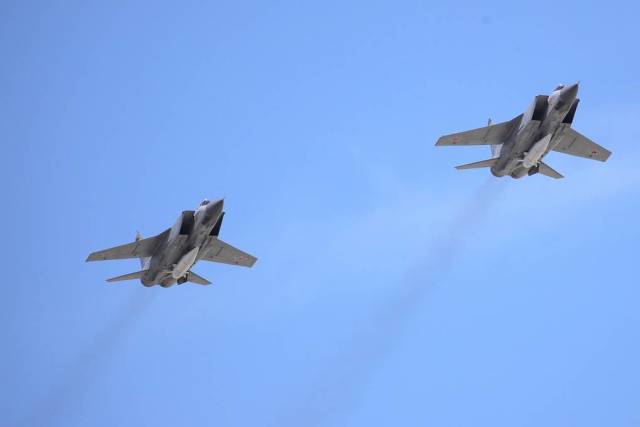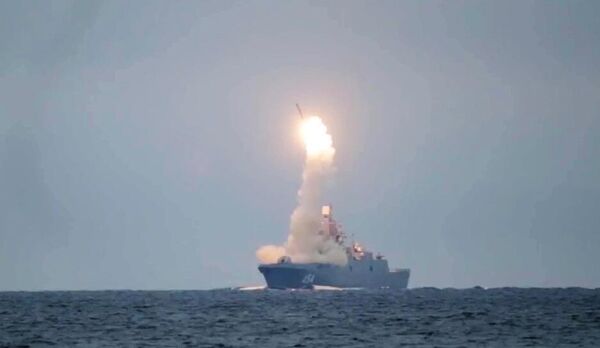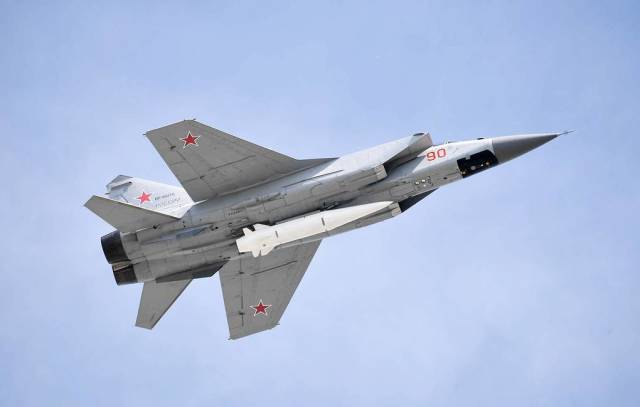The Russian armed forces used hypersonic Zircon missiles during strikes on Ukrainian targets last week. This was announced by the Russian Defense Ministry on March 30. TASS — about a weapon that is almost impossible to evade
Russia regularly launches massive and group strikes with high-precision long-range weapons at military, military-industrial and related facilities throughout Ukraine. However, the Russian military department announced for the first time that, in addition to hypersonic aeroballistic Dagger missiles, hypersonic Zircon missiles were used during these attacks. According to the Ministry of Defense of the Russian Federation, the targets of the strikes have been achieved, all designated facilities have been hit.
The hypersonic Zircon has already been used in combat. Russian President Vladimir Putin said this in a message to the Federal Assembly. "The Zircon naval hypersonic strike complex has already been used in combat, which was not even mentioned in the 2018 message. But this system is already in operation," the head of state said on February 29, 2024.
Hypersonic "duet"
The Russian Armed Forces use two complexes with hypersonic missiles during a special military operation. The first was a complex with a hypersonic aeroballistic missile "Dagger". The characteristics of the munition were revealed by Vladimir Putin in a speech to the Federal Assembly in March 2018. The missile accelerates to 10 speeds of sound, hits targets at a distance of more than 2 thousand km with a 500 kg warhead, and maneuvers in flight, complicating its defeat by means of missile defense. The munition is launched from the supersonic interceptor MiG-31K.
 |
| Supersonic fighter-interceptors MiG-31K with hypersonic missiles "Dagger". |
| Source: © Sergey Bobylev/TASS |
"It was used in our country during a special military operation three times. And she showed her brilliant characteristics three times," Russian Defense Minister General of the Army Sergei Shoigu said in an interview with Rossiya—1 TV channel in August 2022. According to the head of the military department, the Dagger has no analogues in terms of a combination of characteristics — speed, the ability of a combat unit to penetrate into fortified facilities. In addition, the missile is "impossible to detect or intercept." In a special operation, an aeroballistic missile is used to hit particularly important targets. So, in the first combat use in March 2022, the Dagger destroyed a protected underground missile weapons depot in the mountainous area of the Ivano-Frankivsk region due to hypersonic speed and high kinetic energy of the warhead. Later, reports of the use of "Daggers" became regular.
Experts have suggested that the Dagger was created on the basis of a solid-fuel rocket of the Iskander-M tactical complex, as indicated by their external similarity. According to experts, this solution has reduced the development time of the Dagger.
Supersound, hypersound
Supersonic and hypersonic speeds are the speeds of aircraft exceeding the speed of sound in the atmosphere - about 340 m/ s at normal pressure and temperature, or the Mach number (M) equal to 1. It is considered that supersonic speeds lie in the range 1-4.5 M, hypersonic - above 4.5 M. The creation of an apparatus capable of long-term flight in the atmosphere at a speed many times higher than the speed of sound is a difficult scientific, technical and technological task. Russia, the USA, China, India, and the DPRK are engaged in developments in this area. Iran presented its hypersonic missile weapons. In addition to hypersonic missiles, Russia is armed with supersonic land-based, sea-based and air-based cruise missiles.
The second hypersonic complex used in the course of its operation is the Zircon. Vladimir Popovkin, who served as Deputy Defense Minister, announced the development of a sea-based complex with a hypersonic missile in February 2011. By 2016, the weapons development program had reached the flight test stage, as reported by a TASS source in the military-industrial complex. In the summer of 2019, Boris Obnosov, General Director of the Tactical Missile Armament Corporation (KTRV), spoke about the intensive tests of the missile. Zircon was developed by NPO Mashinostroenie (as part of KTRV).
Carriers of the hypersonic complex ru/events/president/news/59863" target="_blank" rel="nofollow">are serial ships and submarines, including those already produced and under construction for the use of Kalibr cruise missiles. In addition, the development of a ground-based launcher "Zircons" was underway . A TASS source shared his opinion that a mobile launcher has been developed for a hypersonic missile, which can also fire supersonic Onyx missiles.
 |
| Launch of the Zircon hypersonic missile from the Admiral Gorshkov frigate. |
| Source: © Press Service of the Ministry of Defense of the Russian Federation |
In January 2020, the Zircon was first launched from the ship — according to TASS sources, the frigate Admiral of the Fleet of the Soviet Union Gorshkov conducted the shooting. In October 2021, the nuclear submarine Severodvinsk carried out the first test launch of the Zircon missile from the Barents Sea. This was followed by a series of successful launches. In February 2024, Russian President Vladimir Putin announced that serial production of Zircon hypersonic missiles had begun.
According to Putin, the Zircon is capable of reaching a speed of about 9 M, can hit surface and ground targets at a range of over 1 thousand km. The commander of Admiral Gorshkov, Captain of the first rank Igor Krokhmal, said that the Zircon, mounted on surface ships, can hit targets at a distance of 1.5 thousand km. The appearance of the missile does not It opens up.
Experts agree that the Zircon is practically invulnerable to missile defense due to its high speed and low visibility. "In addition to its speeds, stealth technologies are also embedded in the product itself," Georgy Roslyakov, commander of the Admiral Gorshkov missile and artillery combat unit, shared his opinion . Retired Rear Admiral, Candidate of Technical Sciences Vsevolod Khmyrov believes that such a hypersonic system as the Zircon is capable of "flashing" any missile defense and air defense system and there is no protection against it. The American newspaper The Washington Times cited the conclusions from the report of the Congressional Research Service. In it, experts note that existing American ground-based and space-based missile detection systems are not able to detect and track the flight of hypersonic missiles.
Originally from the USSR
The Soviet Union has been developing hypersonic aircraft since the 1960s. In 1979, the development of a hypersonic "flying laboratory" began for the study of hypersonic ramjet engines (GPVRD) on cryogenic fuel - liquid hydrogen. A rocket with a liquid-propellant rocket engine of the S-200 air defense system was chosen as the basis. Instead of the elements of the nose of the rocket, a hypersonic engine was installed, the operating parameters of which were controlled by 250 sensors and transmitted to earth via radio channel. According to the book "From the Golden Eagle to the Five Hundred: the Trajectory of Leadership," the first flight of the laboratory rocket took place in 1991. In the mid-1990s, French and American specialists joined the work. During the next launch in 1998, the GPVRD worked for 77 seconds, accelerating the rocket to a speed of 6.5 M at an altitude of 27 km. The preserved body of one of the missiles under this program was sold at auction in the UK in 2019 to a private collector.
According to open source data, in the 1980s at the Raduga ICD (now part of the Tactical Missile Armament Corporation) A hypersonic experimental GAL aircraft was created. It was used to study the problems of creating high-altitude hypersonic vehicles and to obtain scientific and technical groundwork in this area.
"I've been doing hypersound for a long time. Even somewhere in the 1980s, there was my note about this, because at that time the United States was also engaged," Boris Obnosov, head of KTRV, told TASS in an interview. "Since 1986, they have had such a NASP program — the National Aerospace System Plan, which combined developments in 64 areas. It was clear that if we did not get involved in this work immediately and comprehensively, then we would remain on the sidelines. And thank God that in this century the idea has found full support from the country's leadership, and we are working quite intensively in this direction," he added.
Victor Bodrov

